





| Walnut Orb-weaver Spider (Nuctenea umbratica (Clerck, 1757)) |






|
|
Scientific name: Nuctenea umbratica (Clerck, 1757) Common name: Walnut Orb-weaver Spider French name: Épeire des fissures, Épeire nocturne. Order: Araneae Family: Araneidae Size: Males: 7.5 to 10 mm; Females: 12 to 16 mm. Biotope: High supports, old walls, gutters, road signs, fences, posts, old trees, wood heaps, rocks. Web: Vertical, large size and often ovoid web which can reach a diameter of 70 cm and which is rebuilt every day at dusk. There is an average number of 20 radii and the turns are rather spaced. The web is eccentric and the centre is always close to the hiding place where the spider hides during the day. It sits in the centre of its web during the night. Observation period: All year round for females, mainly in summer for males. Geographic area: All Europe, some places in Asia as far as Azerbaijan, North Africa. |
The Walnut Orb-weaver Spider shows a flattened body which permits it to hide into narrow crevices. Its abdomen bears 6 small depressions which are the attachment points of muscles used to flatten its body even more. The general colour is dark brown to blackish, sometimes slightly purplish. The upper side of the abdomen is adorned with a large dark patch showing regularly wavy edges. The lateral sides are a paler colour. The underside bears two yellow symmetrical spots. The legs are ringed. This species mainly feeds on nocturnal flying insects so essentially moths. |
| [To know more about the Walnut Orb-weaver Spider] [Next picture] [Top] |
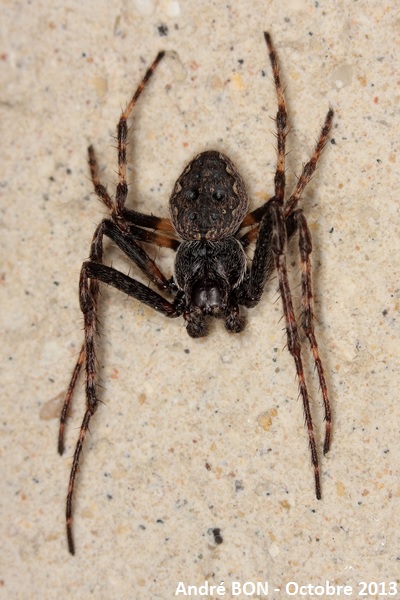
|
I have observed this Walnut Orb-weaver Spider on a wall of the house. The pedipalps indicate one male. The legs are really very long. |
| [To know more about the Walnut Orb-weaver Spider] [Next picture] [Previous picture] [Top] |

|
Here is one Walnut Orb-weaver Spider with a prey caught in its web. |
| [To know more about the Walnut Orb-weaver Spider] [Next picture] [Previous picture] [Top] |
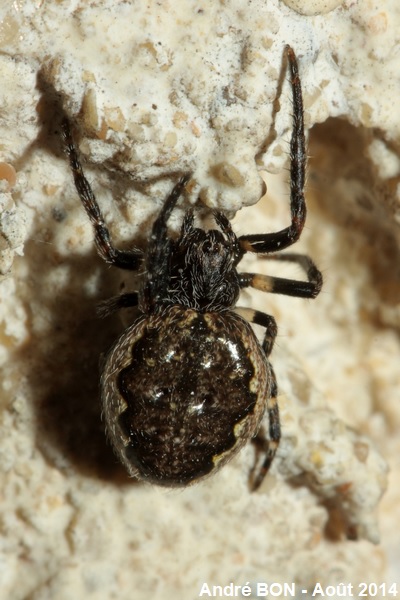
|
I have measured a size of 5mm from the front of the head to the back of the abdomen. This Walnut Orb-weaver Spider is not yet at the adult size. |
| [To know more about the Walnut Orb-weaver Spider] [Next picture] [Previous picture] [Top] |
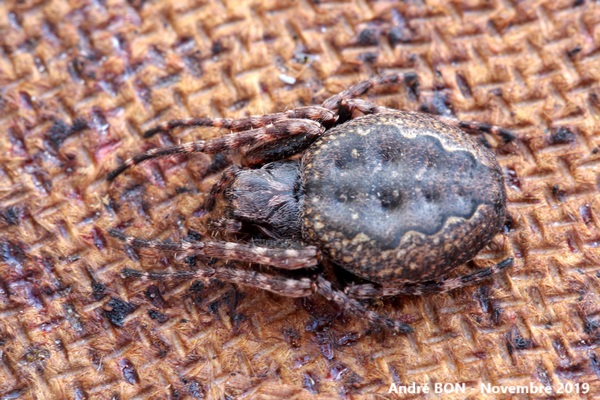
|
My few beehives seem to be appreciated by the Walnut Orb-weaver Spiders. They shelter between the roof and the frame cover. It is a well-sheltered location and heated by the bee colony just below. The only disturbance is when the beekeeper decides to inspect the hive, as here to check if the bees have enough food for the winter and to supplement if necessary. |
| [To know more about the Walnut Orb-weaver Spider] [Next picture] [Previous picture] [Top] |
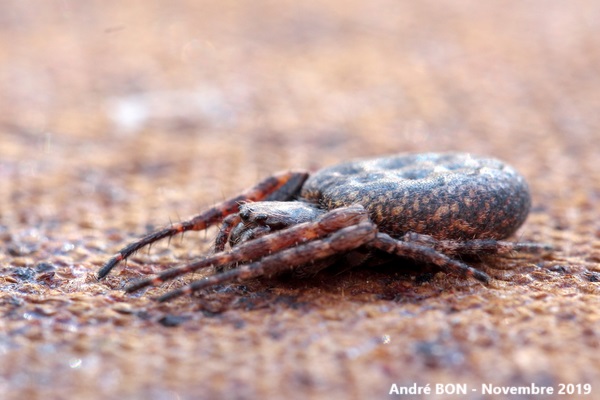
|
This view clearly shows the flattened body shape of the Walnut Orb-weaver Spider. |
| [To know more about the Walnut Orb-weaver Spider] [Previous picture] [Top] |
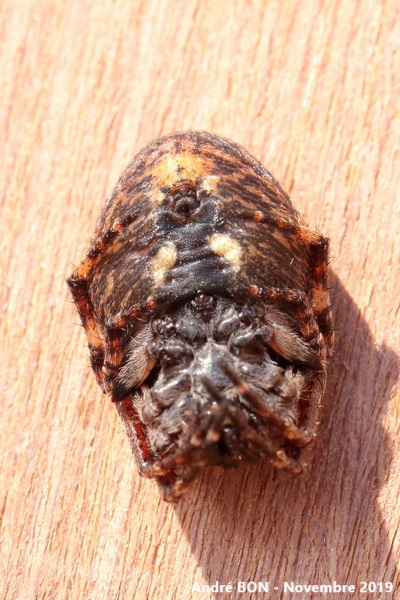
|
Underside view with the two symmetrical yellowish spots. |